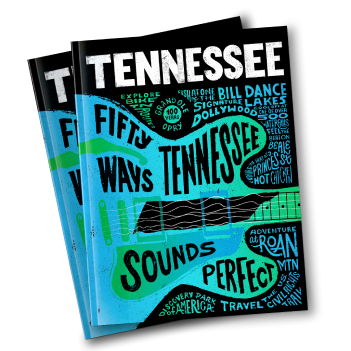Looking for a Tennessee lake target this spring? Bill Dance shares his wisdom on where to cast your line and the fish you can expect to catch. Read your spring fishing guide below.

Cast your attention toward the Cumberland River and its famed striped bass fishery. Stripers (also known as rockfish) reach huge body weights and can provide a fight that’s hard to find elsewhere in freshwater. Tennessee’s Cumberland River system, which includes Cordell Hull Lake and Old Hickory reservoirs, has long been heralded as one of the best places to catch a world-record striper. And, this is not without reason - stripers weighing above or near the 60-pound mark are not uncommon. Catching fish in the 20-pound range is an almost every day occurrence. A thorough stocking program conducted by the Tennessee Wildlife Resources Agency is likely the key thread to turning the area into a trophy destination for stripers. Anglers come from all over the nation to fish these waters. You can even hire a striper guide to take you to the best fishing areas.
Where to fish along the Cumberland River
Fishing below the Old Hickory Lake is a premier fishing spot; and the Gallatin Steam Plant area on Old Hickory has long been a well-known area. The striper fishing can be awesome in the tailrace at any time there is generation at the dam. The oxygen-rich waters are a fish magnet. Old Hickory Lake is located in Smith, Trousdale, Wilson, Sumner and Davidson counties and is easily accessible from Nashville and I-40.
Trout Stock Schedules and Locations in the Cumberland Plateau
There are also excellent trout fishing opportunities across the Cumberland Plateau region in March as the TWRA stocks trout at 41 sites during the month. Among them, Pickett State Park Lake and Standing Stone State Park Lake are stocked with trout, bass, panfish and catfish. Pickett State Park Lake is stocked February through August and Standing Stone is stocked once in March. Flat Fork Creek in Frozen Head State Park is stocked with trout February through April; the Piney River at Cumberland Trail State Park is stocked with trout March through May, has a catch-and-release season November through February with another stocking happening in December and January. These waters are managed under the statewide regulations with no length limit and a creel limit of seven. Anglers use everything from live bait to artificial bait, with in-line spinners being a favorite. Fly-fishing can also be very effective.
Tackle & Bait Advice from Bill Dance
Live bait (typically skipjack or yellowtails) is the preference for striper, and success could depend on the availability of these baits. Typical striper live-bait rigs are the norm - you'll want to fish with bait-casting reels and 7 ½-ft., heavy-action rods. If you are fishing for trophy-sized fish, it is a good idea to use big baits such as live baits that each weigh over a pound. Catching and keeping bait of that size alive is an art, so you'll want to go out with a guide if you're a fishing novice. To ensure the mortality of the trophy stripers caught, Bill Dance suggests using circle hooks when fishing live bait. The size is typically a 5/0, but this, too, is up to your preference. The use of these well-designed, live-bait circle hooks allow anglers to catch and release safely. Keep in mind warm-water discharges at the Gallatin Steam Plant draws baitfish. The area becomes a food chain with predators attracted to the schools of bait. Anglers take advantage of this especially late in March and through April. These two months are considered the best months to catch trophy fish in the region.
Plan your memorable fishing trip to Tennessee by checking out Bill Dance Signature Lakes, premier fishing spots located statewide.
Fly fishing hot spots in East Tennessee
Fishermen and women love to cast their fly fishing line for brown and brook trout in East Tennessee streams.






















